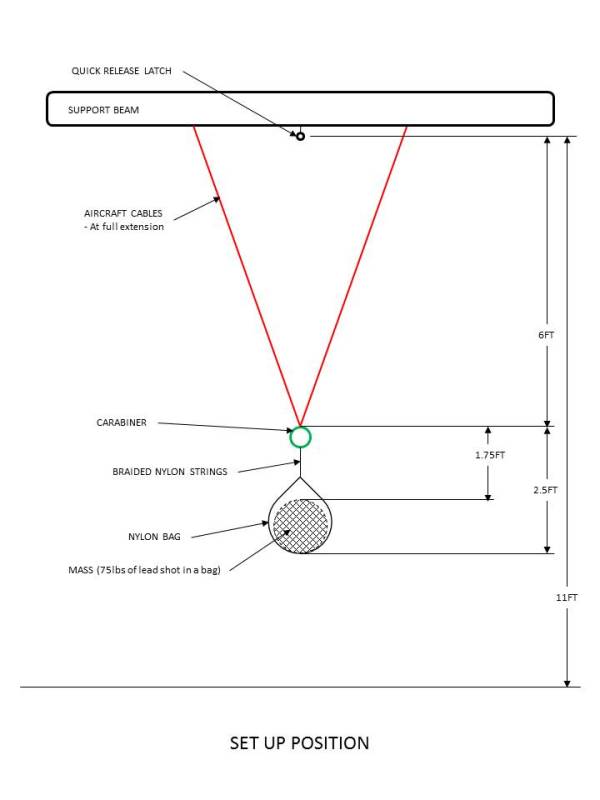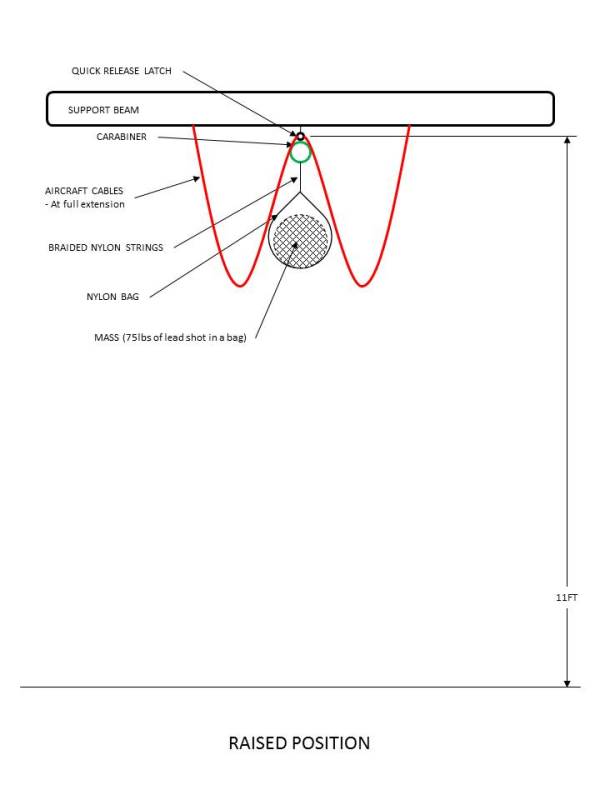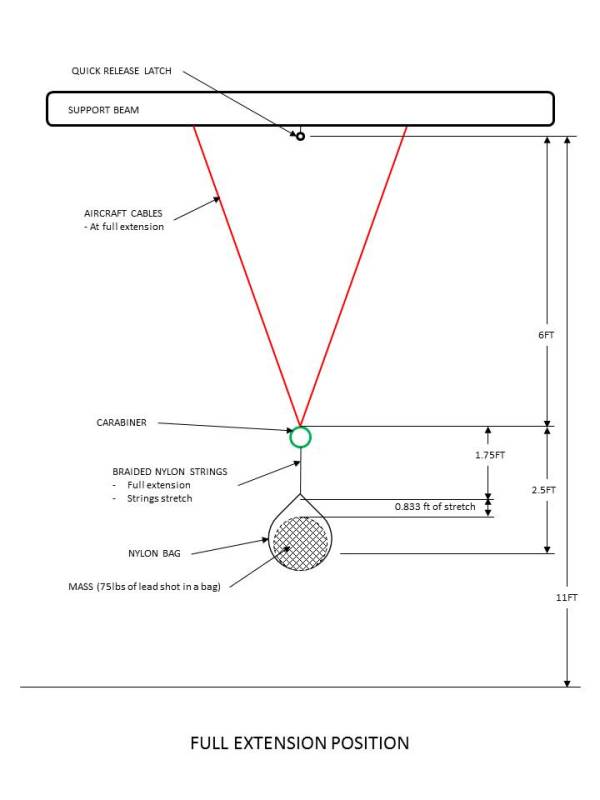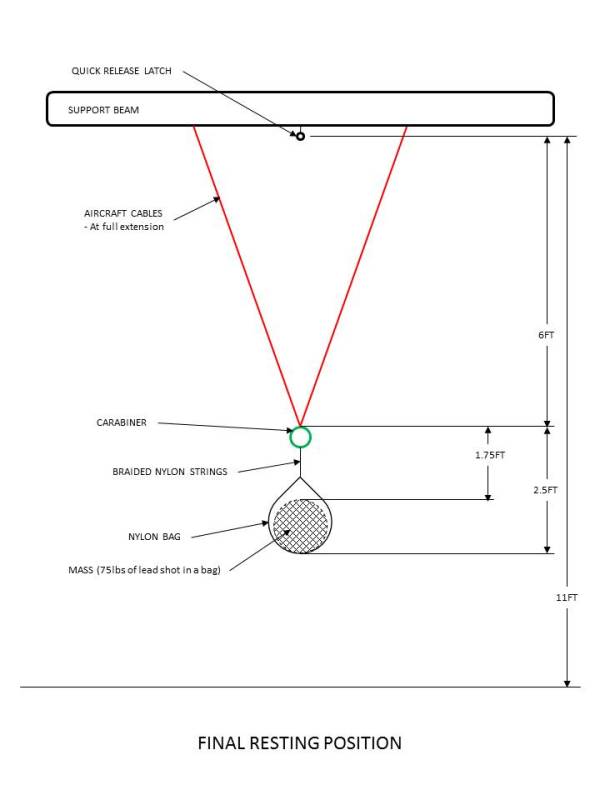Adriano1367
Industrial
First time using this forum, so I hope I'm following proper protocol.
Here is the question: what is the static load equivalent of 7.231 G's?
Here are the details:
Load = 75 lbs with 4 strings to connect to drop test aparatus
Drop height = 6 feet using 2 aircraft cables (DIA = 0.375")
Protocol
- 2 cables are 36 inches apart at the release height - approximately 11 feet in the air
- cables are then lowered to their full extension to form a single connection point - 6 feet from release point
- load strings are connected to cables via carabiner
- load is raised and then connected to quick release latch using the carabiner, approximately 11 feet high
- load is released and falls freely until cables begin the deceleration when the 6 foot length is reached
- load strings and cables are elastically stretched, then load bounces 2 more times before it comes to rest - approximately 4 feet off the ground
Calculations - my calculations, using my limited memory of statics and dynamics, yield the following
- Max impact force = 542.325 lbs force
- Approximately 7.231 G's
- Impact velocity = 19.66 ft/sec
- Drop height = 6 ft
- Deceleration distance = 0.8333 ft
- Rate of deceleration = 232.841 ft/sec^2
I am currently using an exceptionally large I-beam to support the test apparatus and would like to build a test rig to conduct this test. Therefore, I'm looking for a static load equivalent so I can decide if a #6 SCHED 40 pipe would sufficiently support the test with the dynamic loads and weight specified.
Any assistance and/or direction would be greatly appreciated...thanks in advance.
Here is the question: what is the static load equivalent of 7.231 G's?
Here are the details:
Load = 75 lbs with 4 strings to connect to drop test aparatus
Drop height = 6 feet using 2 aircraft cables (DIA = 0.375")
Protocol
- 2 cables are 36 inches apart at the release height - approximately 11 feet in the air
- cables are then lowered to their full extension to form a single connection point - 6 feet from release point
- load strings are connected to cables via carabiner
- load is raised and then connected to quick release latch using the carabiner, approximately 11 feet high
- load is released and falls freely until cables begin the deceleration when the 6 foot length is reached
- load strings and cables are elastically stretched, then load bounces 2 more times before it comes to rest - approximately 4 feet off the ground
Calculations - my calculations, using my limited memory of statics and dynamics, yield the following
- Max impact force = 542.325 lbs force
- Approximately 7.231 G's
- Impact velocity = 19.66 ft/sec
- Drop height = 6 ft
- Deceleration distance = 0.8333 ft
- Rate of deceleration = 232.841 ft/sec^2
I am currently using an exceptionally large I-beam to support the test apparatus and would like to build a test rig to conduct this test. Therefore, I'm looking for a static load equivalent so I can decide if a #6 SCHED 40 pipe would sufficiently support the test with the dynamic loads and weight specified.
Any assistance and/or direction would be greatly appreciated...thanks in advance.




